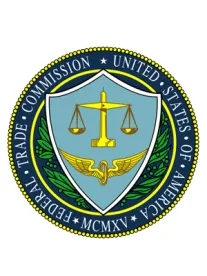The FTC, and antitrust enforcement in general, are having their moment. For example, in early January the Supreme Court heard oral arguments in AMG Capital Management v. Federal Trade Commission1 a case questioning the FTC’s authority to require defendants to pay restitution for money obtained as the result of illegal activities. In that case there is significant doubt about whether the Court will uphold the FTC Act’s Section 13(b) provision allowing for the FTC to obtain this equitable relief, and such a ruling would drastically change the way FTC approaches enforcement. Other developments may also impact the future of the agency, including proposals introduced in 2020 by Senator Amy Klobuchar, the newly-minted chair of the Senate’s Subcommittee on Antitrust, Competition Policy and Consumer Rights2 as well as a proposal from early 2020 from Missouri Senator Josh Hawley, who went as far as to propose relocating the FTC to the Department of Justice (“DOJ”) in an attempt to curb what he deemed “Big Tech’s rampant abuses.” In addition, substantive antitrust reform, again particularly targeted at big tech, is on both the Democratic and Republican legislative agendas for the current Congress.
Against this backdrop, in May 2018 Axon Enterprise Inc. (“Axon”)3, the leading manufacturer and seller of body cameras to large metropolitan police departments in the United States, acquired its top competitor, VieVu LLC (“VieVu”). After a post-consummation investigation by the FTC, the agency ultimately demanded Axon divest VieVu, as well as certain intellectual property which would essentially turn VieVu into a “clone” of Axon. While typically the FTC files an administrative Complaint, starting a statutorily-prescribed adjudication procedure, Axon attempted to short-circuit this procedure, pre-emptively filing its own action in the U.S. Federal District Court of Arizona, challenging the constitutionality of the FTC’s adjudicative process.
Under the FTC’s adjudicative procedures, when the five-person Commission itself votes on and authorizes a merger challenge the FTC staff will, in appropriate circumstances, seek a preliminary injunction in federal district court enjoining the merger until the FTC’s administrative processes are completed. In all circumstances, parties must litigate the substance of the merger challenge before an Administrative Law Judge (“ALJ”) appointed by the FTC Commissioners. The ALJ issues an initial decision setting forth his or her findings of fact and conclusions of law, which the parties may appeal to the full Commission—the same body that initiated the litigation. Once the Commission issues a final decision, a decision against the merging parties may be appealed to a U.S. Court of Appeals.
Axon alleged that the FTC’s review and adjudication procedure are unconstitutional violations of its due process rights because the agency “effectively acts as the prosecutor, judge, and jury.” As evidence of this, Axon noted that the FTC had not lost an administrative proceeding trial in the past quarter-century. Axon argued that these constitutional claims were enough to grant the district court jurisdiction over the matter.
In April 2020, District Court Judge Dominic Lanza, a 2018 Trump Appointee, granted the government’s motion to dismiss. In dismissing Axon’s complaint, Judge Lanza held that Congress’s enacting of the FTC Act of 1914 precluded jurisdiction to hear the case by a federal district court. Axon appealed to the Ninth Circuit Court of Appeals, and last week a split 2-1 panel decided on January 28, 2021 to affirm the dismissal, requiring Axon to fight the FTC on its home court—the administrative procedures prescribed by statute, irrespective of its prospective constitutional claims.
What Does Axon Believe is Unconstitutional About Merger Enforcement?
The fact that Axon alleges the FTC acts as “prosecutor, judge, and jury” is not a new complaint about the agency, and merger enforcement in general. First, Axon challenged what is known as the merger “clearance” process. Merger clearance refers to the FTC and DOJ’s process, not codified in any statute, rule, or regulation, that allows the two agencies to split its review of mergers. This procedure determines whether a company must submit to the FTC’s administrative proceedings or litigate in district court should the matter be “cleared” to the DOJ.
Second, Axon challenges the very structure of the FTC and its ALJ proceedings. The FTC’s five Commissioners are nominated by the President and confirmed by the President; the President may not remove Commissioners during their terms except for “inefficiency, neglect of duty, or malfeasance in office.” These Commissioners have the power to appoint ALJs who hear the very types of challenges at issue in this case and faced by Axon. Those ALJs can only be removed for cause as well, and Axon asserts this means the ALJs are unconstitutionally shielded from removal by the Executive Branch.
Notably, a similar question arose before the Supreme Court and was decided in June 2020 with respect to the Consumer Financial Protection Bureau. In Seila Law LLC v. Consumer Financial Protection Bureau, a 5-4 Court, with Chief Justice Roberts writing the majority opinion, held that the CFPB’s leadership structure was unconstitutional as violating the separation of powers. Under the CFPB’s structure, the President could only remove the CFPB director under special circumstances, the very same “inefficiency, neglect of duty, or malfeasance in office” that limits the President’s removal of FTC commissioners. Justice Roberts’s opinion does not go so far as to say those limitations are what made the CFPB structure unconstitutional, focusing instead on the fact that the CFPB was subject to oversight by only a single director, rather than a board which might otherwise hold the director accountable.
The Ninth Circuit Court of Appeals “Punts” on Constitutionality Arguments
The Ninth Circuit’s split panel opinion deferred on the constitutionality of the FTC’s adjudicative procedure. The majority held that, in essence, the FTC Act specifically provides for the procedure for approaching merger challenges—the FTC’s adjudicative procedures. Surely Axon has raised constitutional issues, but the company will not be deprived of its day in court to raise those challenges, the panel held. Under relevant Supreme Court Precedent, the Ninth Circuit panel noted that Axon should proceed through the FTC’s adjudicative procedure; if it prevails and it is not required to divest its newly-acquired competitor, it remains unharmed and any constitutional harms it may have will be mooted. If, on the other hand, the FTC prevails at the agency level Axon will be entitled to appeal to a U.S. Court of Appeals, and may raise its constitutional claims at that time. In sum, “Axon can have its day in court—but only after it first completes the FTC administrative proceeding.” Axon Enter. v. FTC, No. 20-15662, 2021 U.S. App. LEXIS 2394, at *30 (9th Cir. Jan. 28, 2021).
In a critical dissent, Judge Butamay took issue with the majority’s holding that Axon’s constitutional claims should only be addressed by an Article III court should the company sustain a loss in front of the FTC. He would have held that “to the extent the claims target the agency’s existence, structure, or procedures under the Constitution, rather than its merits decisions, the district court remains an appropriate forum for such an action”—after all, the FTC’s expertise is in substantive antitrust review, not the constitutionality of the agency itself. In a situation in which Axon prevailed on the merits in an adjudicative proceeding, the company would never have the ability to have its constitutional claims heard, yet it would have sustained injury all the same.
Implications for Axon and Beyond
Axon has indicated it is considering its legal options going forward, including both requesting an en banc hearing in the Ninth Circuit as well as appealing to the Supreme Court. Notably, the Ninth Circuit panel did not hold that Axon lacked standing to pursue its constitutional claims; if the standing issue were squarely faced, Axon should prevail on this issue. Instead, the holding is that Axon chose the wrong method—the wrong vehicle—to bring its claims in light of the statutory provisions in place. Of course were a court to hold the FTC structure unconstitutional, it would upend entirely merger review and challenges in the United States. This issue will likely move from the Article III arena into Article I—the Congress. The Supreme Court’s forthcoming restitution decision will likely be the catalyst for increased activity of this set of issues in Congress.
[1] AMG Capital Management, LLC v. Federal Trade Commission, 19-508.
[2] S. 3426 (11th): Anticompetitive Exclusionary Conduct Prevention Act of 2020.
[3] Axon was formerly known as TASER International, Inc.





 />i
/>i

